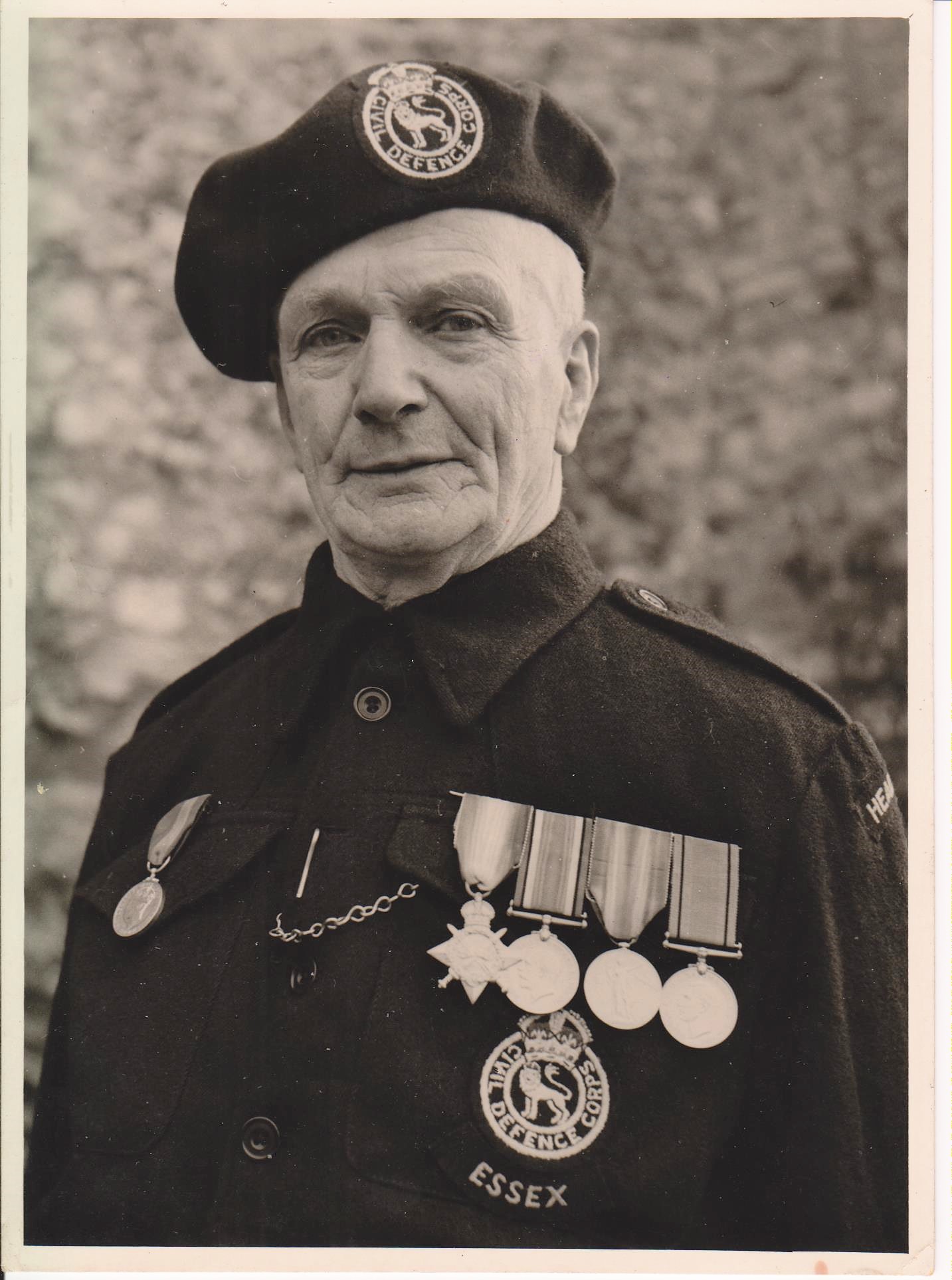
Deirdre Tyler of Richmond explained the story of Ernest (Ernie) John Tyler to us at one of our drop-in days.
Ernie was born on 23 April 1880 in Edmonton, London. He served in the Royal Engineers 1914-1919, mainly with 29 Division and saw active service in the Dardanelles and the Somme. He embarked for his first active service on 2 June 1915.
He was one of the few Royal Engineers aboard the “S.S. River Clyde” in 1915, when it was ill-fatedly beached at “V” beach, Cape Helles, Gallipoli, under the guns of the defenders. Six VC’s were subsequently awarded to the ship’s crew for their courage in maintaining the bridge and rescuing the wounded from the beach.
Ernie subsequently spent time in Egypt and then at the Home Depot. He suffered from typhoid or enteric fever and as a result was granted home furlough from 29 February to 19 April 1916. He also caught malaria, being classed B,ii for six months as a result. He was awarded a Good Conduct Badge on 18 June 1917.
Ernie lost two of his brothers in the Great War, one at Gallipoli, and another at sea.
After the First World War, Ernie returned to his work in the postal service and was in charge of the first telegraph message motor cycle delivery riders.
He had six children who survived into adulthood. Five served their country in the forces; four in the second world war and one post war. Bernard, his eldest son, was killed in action at Anzio, where he is buried.
In WWII Ernie served as an ARP in the Heavy Rescue Team in the London Blitz. He was involved with the Civil Defence Corps, and was a keen life-long supporter of the Royal British Legion from its inception. He held several tenures as Chairman of the Benfleet Branch in Essex. He died in 1967.
This commemoration is dedicated to the service of Ernest J. Tyler, and to the service and ultimate personal sacrifice of two of his brothers, and his son Bernard E. Tyler, WWII (Anzio).
Posted on behalf of Ernest Tyler’s son, Major (retd) Royce Tyler, MBE, ex Vice Chairman of the Royal British Legion, Richmond Branch, and former dedicated volunteer at the Green Howards Regimental museum.
Deidre P.A. Tyler, daughter of Royce Tyler, both proudly, of Richmond.

Ernie’s medal card
Explore more memories from the ribbon
-
Robert Codling
Robert Codling was the son of John and Elizabeth Codling of 13 Revesby Street, Tyne Dock, South Shields. At the outbreak of war he enlisted in the Yorkshire Regiment and was posted to the 8th Battalion. 19873 Private Codling arrived in France in September 1915 and was in and out of the lines in October, November and December. The 8th Battalion relieved the 10th West Riding Regiment in trenches at La Rolanderie on the 18th December. Robert was awarded the DCM for his actions on the 21st. His citation reads, “For conspicuous gallantry near Rue du Bois on 21st December 1915, when under heavy fire and in the face of rifle grenades, he returned to a wounded comrade and brought him in. Later in the day he joined a patrol and searched under heavy fire for his platoon officer who had failed to return”. On 13th October 1916, at the age of 21, he died of wounds. The battalion had been serving in the area of Contalmaison and had suffered a number of casualties. He is buried at Dernancourt Communal Cemetery Extension in the Somme.
-
General Sir E S Bulfin KCB CVO
Bulfin was born in Woodtown Park, Rathfarnham, Co Dublin in 1862. Although he attended Trinity College, Dublin, he did not take a degree, choosing a military career instead.He was commissioned into the Princess of Wales’s Own (Yorkshire Regiment) in 1884. After 30 years of service he became Colonel of the Regiment in 1914. As Colonel, Bulfin wanted the Regiment to stand out in the Army Lists with a more unique name. He pushed for the traditional nickname of ‘The Green Howards’ to be made official to differentiate between all the other ‘Yorkshire’ Regiments. He was finally successful in 1921, and the name lasted for the next 85 years.
-
2nd Lieutenant Arthur F Clarke
2nd Lieutenant Arthur F Clarke was attending the 5th Battalion annual camp in Wales when war broke out. He spent the first months of the war moving between Scarborough, Hull, Newcastle, Hartlepool and Darlington. On the 18th April 1915 he went out to France and was wounded during a gas attack on the 26th May 1915. The Green Howards Gazette records: “The day seemed interminable as the poor shelter had to be hugged tight all the time. With darkness came the order that we were to pass through GHQ lines and take up a front line position in Zouave Wood facing Hooge, where the main attack by the enemy had been made. That little strip of ground has since been the cockpit of our Western front. On our journey up another man was killed, and Lieutenant A F Clarke was wounded. That tour was destined to be the worst we had so far entered upon.” We know he returned to the front line as the Green Howard Gazette for January 1916 records that he was wounded. He rose to the rank of Captain in November 1916.
